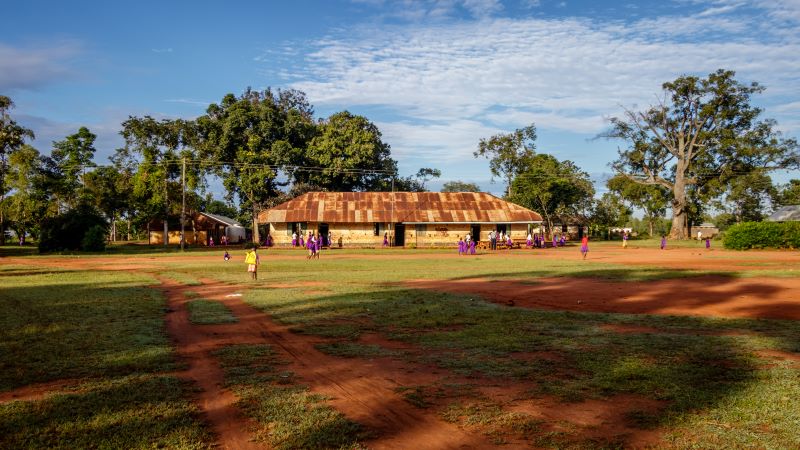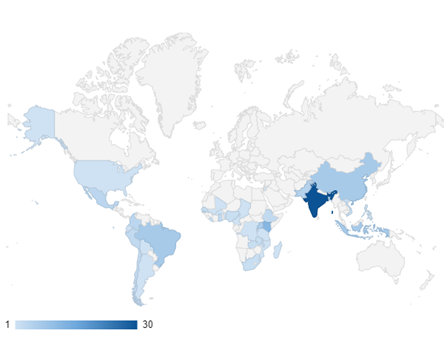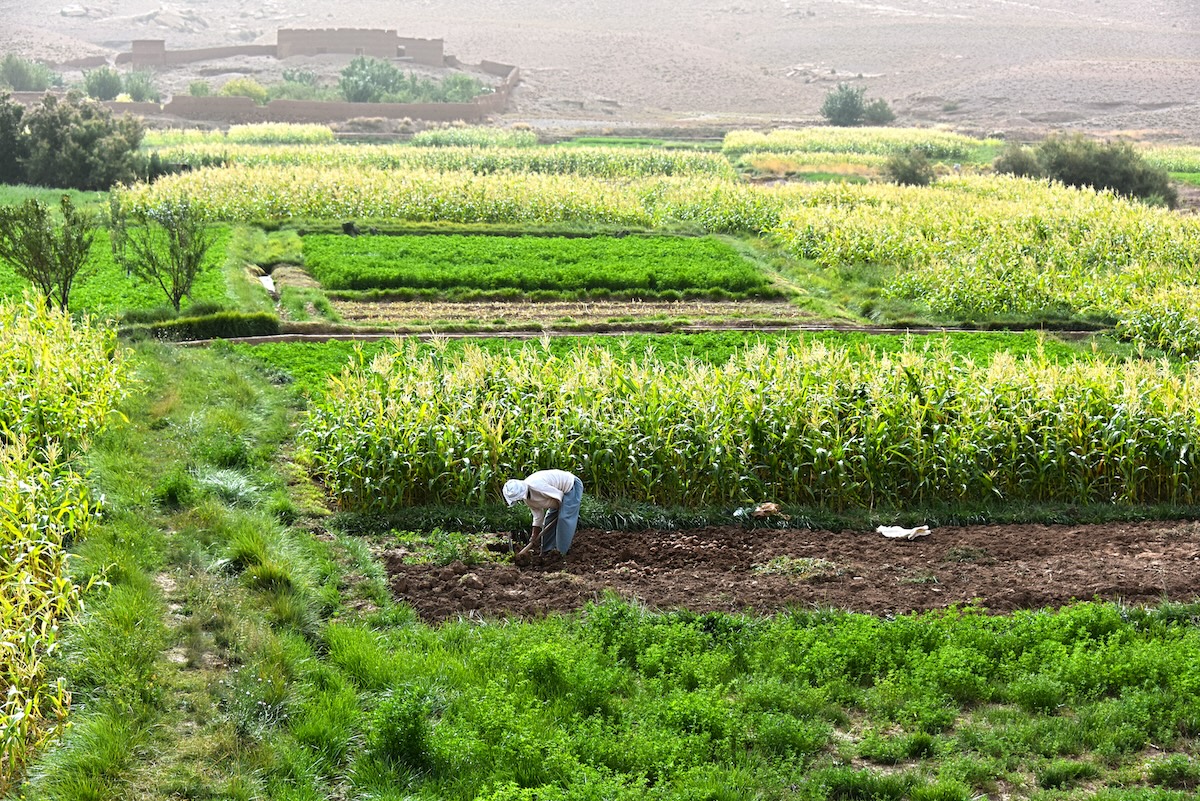Recommended
This week was the Centre for the Study of African Economies’ annual conference. Every year, scholars from around the world—including many based on the African continent—convene to present their research findings on a vast array of topics. This year’s conference included more than 200 presentations on agriculture, education, firms, fiscal policy, health, inequality, labor, migration, monetary policy, natural resources, political economy, poverty, productivity, trade, and more. You can read most of the studies in the online conference program.
There were more than two dozen studies on education alone. These represented analysis from 16 countries (with a handful of cross-country studies). There were four studies from Ethiopia, three from Kenya, three from Nigeria, two from Pakistan (not in Africa, to be sure, but there are relevant lessons), and then one from each of a number of other countries.
I’ll provide a takeaway from the studies on education. Of course, my takeaway isn’t the only one. If you have another one, leave it in the comments! If you’re interested in a takeaway, I encourage you to dive into the paper! (Also, I only reviewed the studies that were posted online, which excluded just one.) For most studies, I’ll give an indication of the empirical methods used. More than a third of the studies were randomized controlled trials (RCT), followed by difference-in-differences (DID) and fixed effects (FE) studies, and then regression discontinuities (RD) and instrumental variables (IV) analyses.
What We Learned about Education in Africa (and Beyond) at CSAE This Year
Cost of Schooling and the Distance to School
- Abolishing fees in Tanzanian secondary schools unsurprisingly increased secondary school access, but it also led primary school test scores to be better predictors of the transition to secondary school (rather than having the money to pay). Primary exam pass rates also rose. (Sandholtz) #DID
- In Côte d'Ivoire, having a middle school 1 percent closer translates to an additional quarter year of post-primary education and 8 percent higher wages (with bigger gains for women). (Martinez) #IV
- In rural Senegal, constructing schools reduced fertility by age 25 by nearly 40 percent. (Diallo and Delaunay) #DID
COVID and Education
- School closures due to COVID in Nigeria were associated with sizeable learning loss (0.6 standard deviations) in both English and Math. "However, a program designed to slow down the curriculum and cover what was missed during school closures led to a rebound within two months, and a recovery of all learning losses." (Adeniran et al.)
- Phone surveys in seven African countries suggest that the COVID pandemic resulted in lower school enrollment rates. Children in households receiving government transfers or with an employed head of household were more likely to engage in learning activities. (Dang et al.)
- Providing information about a learning app in Bangladesh did not increase its use among secondary school students, but it did lead richer parents to invest in tutoring, boosting their kids' test scores. One-to-one phone learning support boosted poorer kids' test scores. (Beam, Mukherjee, and Navarro-Sola) #RCT
Early education
- Children who start school early in Lesotho and so are young for their grade have worse reading skills, are more likely to drop out of school, are more likely to marry and have kids as adolescents, and are more likely to have a child pass away. (de Neve, Moshoeshoe, and Bor) #RD #FE
- Families' participation in a cash-for-work program in Ethiopia is associated with positive changes in some foundational cognitive skills, like long-term memory. These may come through reduce child labor or through better nutrition. (Freund et al.) #FE
- Evidence from Ethiopia and Peru suggests that stunting slows children's development of key cognitive skills like working memory and inhibitory control. (Sánchez et al.) #FE
Girls' education and women's equality
- Showing primary school teachers in Pakistan “a pro-women’s rights visual narrative” led them to “increase their own and students’ support for women’s rights … and willingness to petition parliament for greater gender equality… Effects compound when teachers teach a gender-rights curriculum. Mathematics achievement also increases for classrooms assigned to form mixed-gender study groups.” (Mehmood, Naseer, and Chen) #RCT
- A program providing "mentored girls' clubs, life skills, and vocational training" in northern Nigeria dramatically increased adolescent girls' likelihood of staying in school and decreased the likelihood of adolescent marriage. The program worked with the whole community to change norms. (Cohen, Abubakar, and Perlman) #RCT
- The construction of a new university in one’s area in Ethiopia led to higher primary and secondary school completion rates for girls. (Ahmed) #EventStudy
- In Burundi, free primary education increased educational attainment for women across the income spectrum, but many of the downstream benefits (literacy, employment, reduced adolescent childbirths) are only realized by the poorest women. (Wild and Stadelmann) #RD
- Universal primary education (UPE) policy in Nigeria increased educational outcomes for men and for women. It increased women's likelihood of having a say in household decisions. In the South of Nigeria, UPE allowed girls to catch up to boys (who were nearly universally enrolled already), whereas in the North, boys gained more education than girls. (Deschênes and Hotte) #DID
- In Kenya, providing “disposable sanitary pads reduced school absenteeism…and improved self-reported physical well-being (6.2%).” Providing a menstrual cup, which girls were slow to take up, “had no discernible effect on absenteeism, but led to a 10.1% improvement in emotional well-being among” girls with heavy periods. But as pads stopped being provided, those well-being measured tapered off; not so for menstrual cups, which last for years. (Benshaul-Tolonen et al.) #RCT
- “Kenyan women and youth traders face various challenges… gender biases in occupational choices; cultural and economic constraints; unpaid family work; under-representation in informal apprenticeships; lack of provision of child care facilities; lack of digital skills; underrepresentation in Technical and Vocational Educational and Training,” and more. (Nganga)
Information and Education
- Providing Kenyan 8th graders with information about the distance to potential secondary schools, along with their costs and average academic performance, led students to choose closer schools without compromising quality. (Bonds) #RCT
- Providing information about “potential careers, paths to higher education and financing options” to Grade 9 students in rural Cambodia led to reduced high school enrollment among low-performing students. The program “made low-performing students aware of alternative career paths and more realistic in their expectations.” (Gehrke, Lenel, and Schupp) #RCT
Teachers
- In rural Niger, regular phone calls to "the school director, teachers, the village chief and two randomly selected parents" improved teacher and school director attendance at school by multiple hours per week; they also increased teachers’ feelings of being appreciated. In a separate intervention, phone calls and texts to provide pedagogical support improved teachers' perceptions of the work they were doing. (Aker and Awonon) #RCT
- Teacher absenteeism has negative impacts on student learning outcomes in Angola. Even as test scores in Angola were improving over time, they fell in schools with high rates of teacher absences. (Mendonça and Vicente) #IV #DID
- When assigned to either rigidly defined remedial lessons or remedial lessons where the teachers had more discretion, most teachers in the latter group didn't use the flexibility, instead defaulting to the provided lessons. Both groups saw student learning increases. (Beg et al.) #RCT
Training
- 89 impact evaluations of vocational training programs find three things: (1) vocational trainings have substantive impacts on youth employment outcomes, (2) there are programs that work in both high-income and lower-income settings, and (3) the mechanism by which they have an impact seems to differ across settings: human capital building in high-income settings and signaling or screening in lower income settings. (Kemper, Stöterau, and Ghisletta)
- "A business training program fostering an entrepreneurial mindset" among university students in Uganda increased the likelihood of running their own business 9 months later, particularly if they were shown a motivational video that emphasized financial gains of owning your own business (as opposed to creative freedom). (Bartoš et al.) #RCT
And more!
- Inclusion: “Africa has one of the lowest proportion of countries with any form of disability legislation… Being disabled alone reduces the probability of ever being enrolled in school by 10 percentage points,” but disability legislation “increases the likelihood of ever being enrolled in school by 12 percentage points.” (Odhiambo and Günther)
- Language of instruction: Instructing students in English in a multilingual context (like Ethiopia, in this case) “reduces student mathematics test scores by 0.2 standard deviations compared to” students instructed in a language they speak at home. Also, “English medium learners do not perform any better in their English test scores.” (Opare-Kumi)
- School grants: In rural Pakistan—which has a large private sector education market—large cash grants to public schools, distributed through school councils, led to increased learning in both public and private schools, as the private schools sought to compete.(Andrabi et al.) #RCT
- Siblings: Boys who don't inherit property from their father get less education if they have a brother. Not so for boys who do inherit property. So say data from 27 African countries. (Collins) #FE #RD
Thanks to Amina Mendez Acosta for research assistance on this blog post.
Disclaimer
CGD blog posts reflect the views of the authors, drawing on prior research and experience in their areas of expertise. CGD is a nonpartisan, independent organization and does not take institutional positions.
Image credit for social media/web: Adobe Stock





